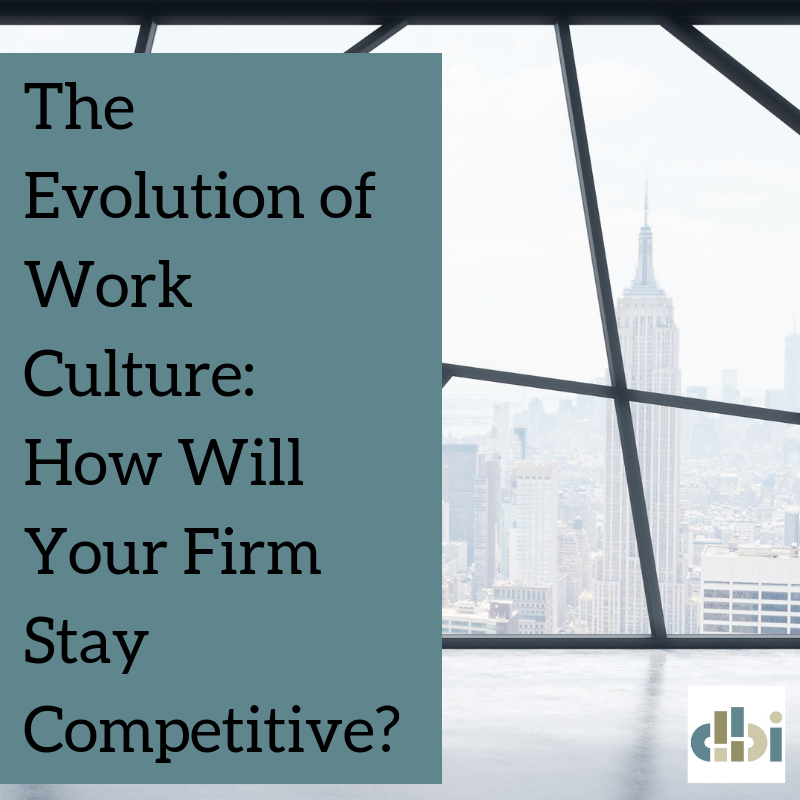
Work culture has changed immensely over the past 60 years. The workplace is more diverse, expectations are higher, and values have shifted. If your firm hasn’t changed with the times, you won’t be able to compete in this job market. Here is what you need to do to make your firm stand out.
Open Offices
Starting in the 1960s, cubicles became an iconic feature of the workplace. Cubicles were intended to make work easier for people by creating a more efficient workplace but have since lost their appeal. Most people now see cubicles as impersonal and as a form of confinement. Now most professionals prefer more open office spaces. They want to be able to easily communicate and collaborate with their coworkers. The one drawback of open office layouts is that they generally mean more distractions. They key is to find a way to make office spaces more open, while limiting unnecessary distractions. This can be done in many ways but the key to remember is that people like to both collaborate and share ideas AND work on their own in a space defined as theirs.
Changes in Diversity
Fifty years ago, most architecture and design professionals were white, able-bodied males. The composition of the workforce in the US has changed drastically since then. There is increased gender diversity, ethnic and racial diversity, and ability diversity. To maintain your firm’s appeal as a great place to work, you much have inclusivity as a core tenant of you firm. You want to have a comprehensive sexual harassment and discrimination policies. You also need to eliminate any confirmation bias you might have in your hiring process. Meanwhile, you want to create a company culture where diversity is embraced. It must start at the top. If employees see the leader embracing diversity, they will follow suit.
Diversity is also a competitive advantage, especially in design. Good ideas come from anywhere and great design is often the product of the give and take of different points of view, influences, and experiences.
Work-Life Balance
For decades, people worked 9-5, Monday through Friday. Then, during the 80s and 90s, this shifted. Overtime became much more common. Many people were now working 60 hours a week. With the rise of the Internet, workloads increased even more. Now people could more easily take their work home. Yet, more recently, there’s been a renewed emphasis on work-life balance. People are tired of working around the clock and taking work stress home with them. Employees want to spend more time with their families, take vacations, and enjoy life outside of work. Most people still work long hours, but many architecture and design firms are finding ways to add more balance to employee’s lives. This might mean more flexible schedules, more vacation time, remote-work opportunities, and/or introducing stress-reducing activities into the workday. As owners and managers, it is critical to understand the changing influence of work life balance.
Much about work life has changed since the 1950s and 1960s. Today, work culture reflects the diversity and the values of modern-day society. Is your firm, or the firm you work for, stuck in the past. If you want your organization to succeed, you need a culture that resonates with the current changes in workplace dynamics. Go get started. If you have a successful, modern workforce, let us know.
Are you looking for top talent in architecture or interior design?
Contact us to discuss how we can bring top leadership talent to your firm. David Brown International is s a global leader in executive recruiting and placement of top tier talent in Architecture, Design, and Technology. Our mission is to create a lasting legacy of success, growth, and profitability for our clients, candidates, and employees.
Are you a professional looking for a new opportunity?
Contact us to discuss your career options or browse our open positions.